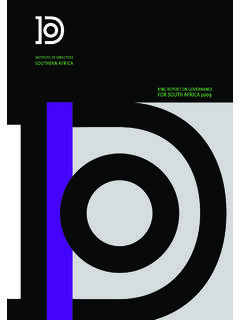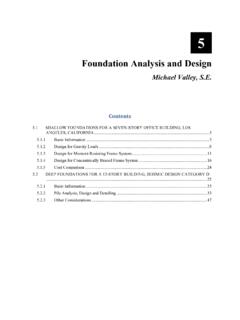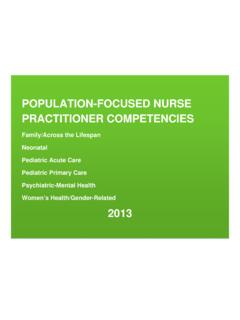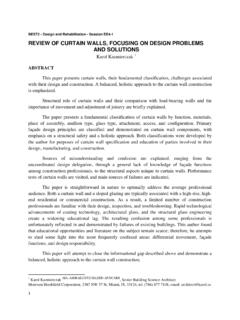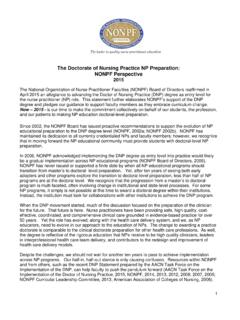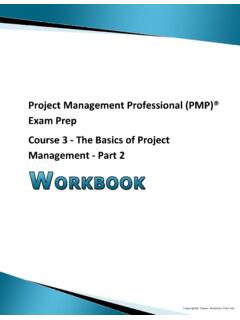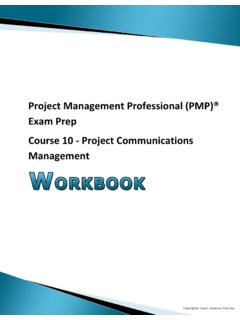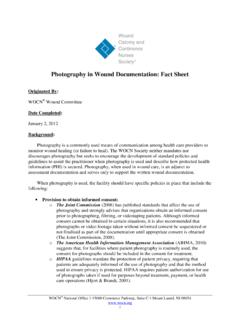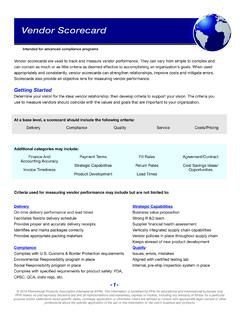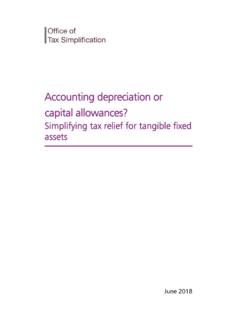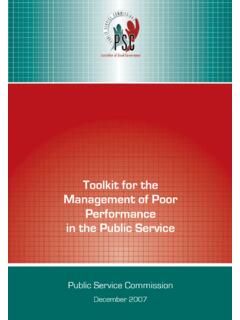Transcription of The impact of project management (PM) and benefits ...
1 The impact of project management (PM) and benefitsmanagement (BM) practices on project success: Towardsdeveloping a project benefits governance framework Amgad BadewiSchool of Aerospace, Transport and Manufacturing (SATM), Cranfield University, UKReceived 8 December 2014; received in revised form 4 May 2015; accepted 18 May 2015 AbstractBenefits management (BM) and project management (PM) are two interrelated approaches to the success of projects. The literature, however, stilllacks empirical evidence of the value of applying BM practices. Hence, it is aimed to test the impact of BM practices on the success of investments inprojects, taking into consideration the impact of PM practices on that success. Since the results, based on 200 valid responses, suggest that a significantproportion of organisations adopt PM and BM concurrently, SEM was used. PM practices were not only found to influence project managementsuccess but also to affect project investment success.
2 However, BM is found to be less significant and to have less impact on project investment , the probability of project success is enhanced significantly when PM and BM practices are combined together. Therefore, a governancebased framework is developed to uncover the interweaving relationship between the two practices. 2015 Elsevier Ltd. APM and IPMA. All rights : project benefits governance framework; benefits management ; project management ; project success; Structure Equation Modelling; project governance;Change management1. IntroductionDelivering project outputs on time and on cost was the mainconcern for project managers in 1960 up to the 1980s (Ika, 2009).Although the research focus has changed to other concerns, suchas customer satisfaction and achieving a project 's strategicobjectives, a significant number of project managers still focus onthe iron triangle (cost, time and scope) of performance metrics.
3 Inaddition, factors such as age and experience make projectmanagers focus on this iron triangle (M ller and Turner, 2007),but the complexity and uncertainty of project outputs lead to costand time overruns (Williams, 2005) and this can lead projectmanagers to focus on this , the over focus on delivering the project iron triangleperformance measures (cost, time and scope) creates an output-focused mentality (Chih and Zwikael, 2015). Thismentality creates problems at the organisational and theindividual et al (2006)show that this mind-set atthe organisational level, which they call projectification ,leadsto many problems that limit the effectiveness of the organisationto realise benefits from its projects, such as the distributionbetween project managers and functional managers in theorganisation of power, authority and responsibilities. On theindividual level, inexperienced project managers tend to focusmore on iron triangle performance measures than on customersatisfaction measures (M ller and Turner, 2007).
4 At the time of submitting this paper, Mr. Badewi is a PhD student at CranfieldUniversity in his writing-up phase. The researcher is registered as a practitioner(MSP) in implementing transformation programmes (such as Enterprise systems,six sigma, and TQM). Additionally, he is project management Professional (PMP)and IT Service management (ITIL) certified. Furthermore, he is an active memberof Chartered Institute of management Accounting (CIMA) and British Academyof management (BAM). His experience as a project management /benefitsmanagement consultant has covered many European and Middle East countriessuch as the UK, Switzerland, Austria, Egypt, Emirates, and Saudi 2015 Elsevier Ltd. APM and IPMA. All rights cite this article as: A. Badewi, 2015. The impact of project management (PM) and benefits management (BM) practices on project success: Towards developinga project benefits governance framework, Int.
5 J. Proj. online at Journal of project management xx (2015) xxx xxxJPMA-01779; No of Pages 18 The literature reveals that this output-focused PM mind-setcould confuse the orientation of a project manager and hencecould leave the project customers/sponsors unsatisfied (Shenharand Dvir, 2007). Indeed, complying with the iron triangle alone isargued to be insufficient for judging a project successful (Samset,2009 ). For this reason, a new project benefits management mentality is spotlighted by academics and practitioners to handlethe issue of what factors are required to realise the benefits fromthe projects and how this should be done (Bennington andBaccarini, 2004; Breese, 2012; Chih and Zwikael, 2015). benefits management (BM), sometimes called BenefitsRealisation management , is a framework which was formerlyused with the aim of increasing the success of InformationTechnology (IT) projects (Ashurst and Doherty, 2003; Breese,2012; Melton et al.)
6 , 2008a,b; Serra and Kunc, 2015). However, ithas spread now to other industries (Chih and Zwikael, 2015;Mossalam and Arafa, in Press). Despite an early call to implementBM (Thorp, 1998; Ward et al., 1996), little empirical evidence hasbeen brought to show how much light benefits management shedson the prevalent ways in which projects become successful. Mostof the research conducted on benefits management either exploresit at the level of implementation (Bennington and Baccarini, 2004;Coombs, 2015; Lin and Pervan, 2003) or implements anddevelops the benefits management approach in case studies(Baccarini and Bateup, 2008; Doherty et al., 2011; Fukami andMccubbrey, 2011; Pina et al., 2013). Nevertheless, a few papershave used generalizable evidence to test the success or level ofeffectiveness of benefits management (Badewi, 2015; Serra andKunc, 2015).Paradoxically, from one perspective, these papers have founda mixed weak relationship between the implementation ofbenefits management practices and project success (Badewi,2014; Serra and Kunc, 2015).
7 Indeed, current benefits manage-ment practices are not in themselves a panacea (Breese, 2012)and sometimes they hardly even matter (Haddara and Paivarinta,2011 ). From another perspective, project management practicesalone are perceived to have only a moderately significantrelationship with project success (Besner and Hobbs, 2013).Moreover, in terms of customer satisfaction project manage-ment maturity is found to have an impact on project managementsuccess but not on project investment success (Berssaneti andCarvalho, 2015). Additionally, project management performanceis significantly correlated with success in both project investmentand project management (Mir and Pinnington, 2014). However,when project management practices are used in transformationalchange, such as the deployment of a new IT system to changework practices, the results may be frustrating (Ram et al., 2013).Therefore, it is advised that change management practices shouldbe integrated with project management practices (Hornstein,2015 ).
8 This could be done by synchronising the soft and hardapproaches to managing the project and its stakeholders (Shi,2011 ).In order to understand how project management may have animpact on project investment success,Thomas and Mullaly(2008)address the point using a general framework to identifythe contextual factors that affect the capacity to implement PM(such as the quality of the people and technology used in PM)which in turn affect the project 's success. The present research isdesigned to test whether the successful implementation ofprojects leads to project investment success. Furthermore, itaddresses whether, as a single framework without PM practices'being implemented, BM alone can deliver and BM frameworks aim to deliver organisational valuefrom investments in initiatives. However, they each havedifferent aims, methodologies and techniques. Thus, combiningthem into a single governance framework, called project benefitsgovernance, is proposed to enhance the probability of bridge the knowledge gap, this paper tests the relationshipbetween success in different areas ( project investment successand project management success) to find whether successfulproject management leads to project investment success.
9 It goeson to propose that project management practices (ProjectManagement Institute, 2013a,b) alone and benefits managementpractices alone (Ward and Daniel, 2006)affect the success ofproject management . Finally it proposes that, when PM and BMcome together, the probability of success is Literature project success and project benefitsThe main purpose of using a project management frameworkis to increase organisational value (Dalcher, 2012). Theorganisation can benefit from using project managementframework by increasing the effectiveness of human effort inthe organisation while increasing the efficiency of these , project success is measured by its efficiency in theshort term and its effectiveness in achieving the expected resultsin the medium and the long term (Jugdev et al., 2001; M ller andJugdev, 2012). Therefore, the value of the project can beunderstood in so far as it satisfies customer needs, aligns theproject output with the organisation's strategy and gives a returnon investment (Thomas and Mullaly, 2008).
10 Nevertheless, from the traditional PM point of view, scopecreep in projects or over-budgeting and over -scheduling are notacceptable (Atkinson, 1999). Therefore, achieving the targets of aproject is called project management success (Zwikael and Smyrk,2012 ) or internal project performance (Golinietal.,2015).However, the ability of the project 's output to deliver the expectedreturn on investment is the key to declaring the project successfrom the business perspective (Camilleri, 2011; Artto andWikstr m, 2005). Therefore, project investment success is usedto describe the ability to generatethe project 's return on investment(Zwikael and Smyrk, 2012). project investment success is indeed more challenging thanproject management success. project investment success needs asystem thinking mind-set to understand and to manage the internaland the external environment (Fortune and White, 2006). Forinstance,Cserh ti and Szab (2014)have found that relational-oriented success factors such as communication, co-operation andleadership are more critical than are task-oriented success supporting this evidence,M ller and Turner (2007)find thatmore experienced project managers are more interested in2A.
